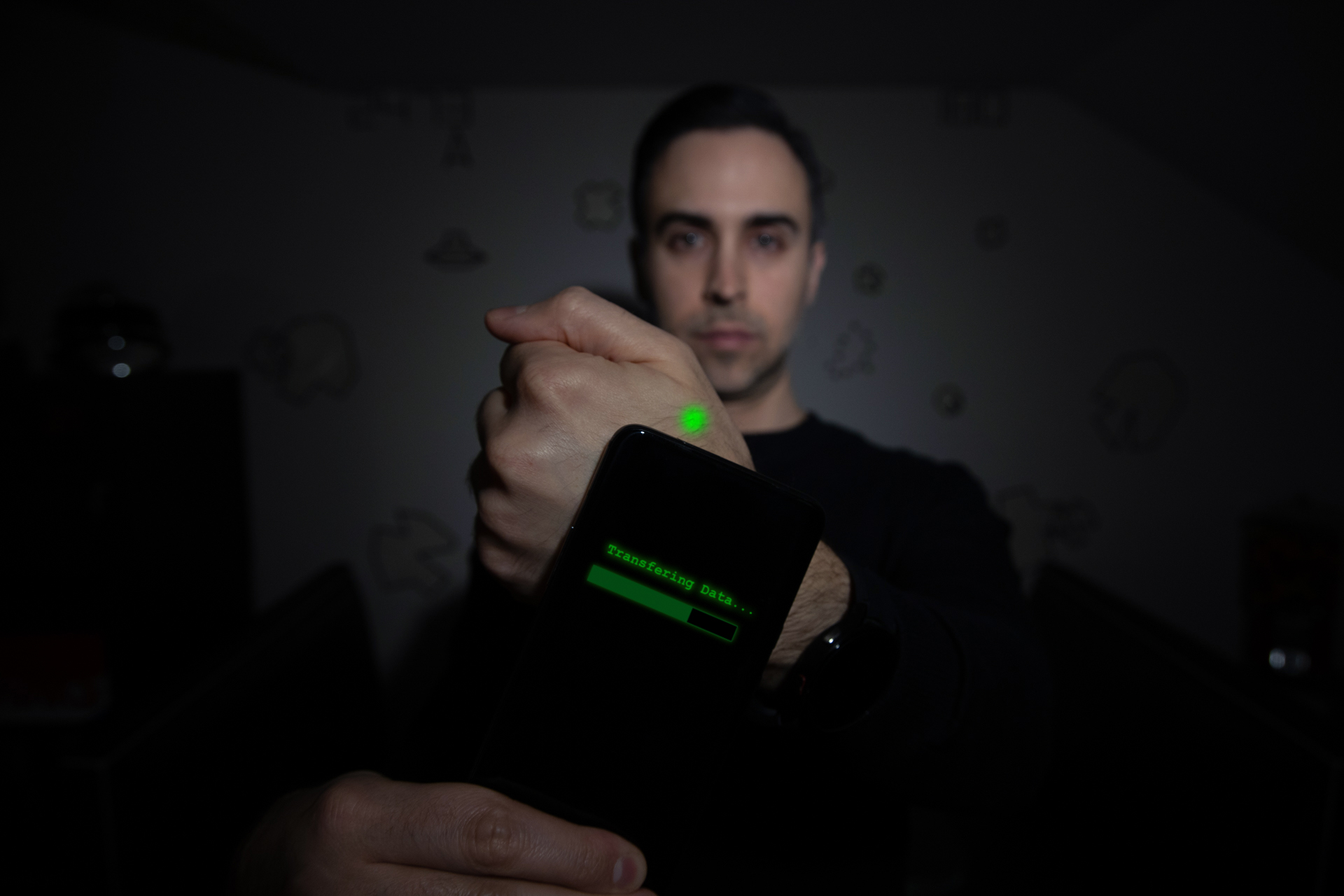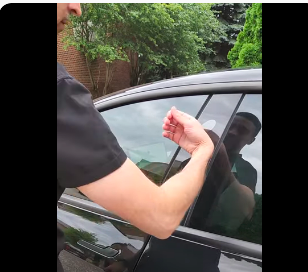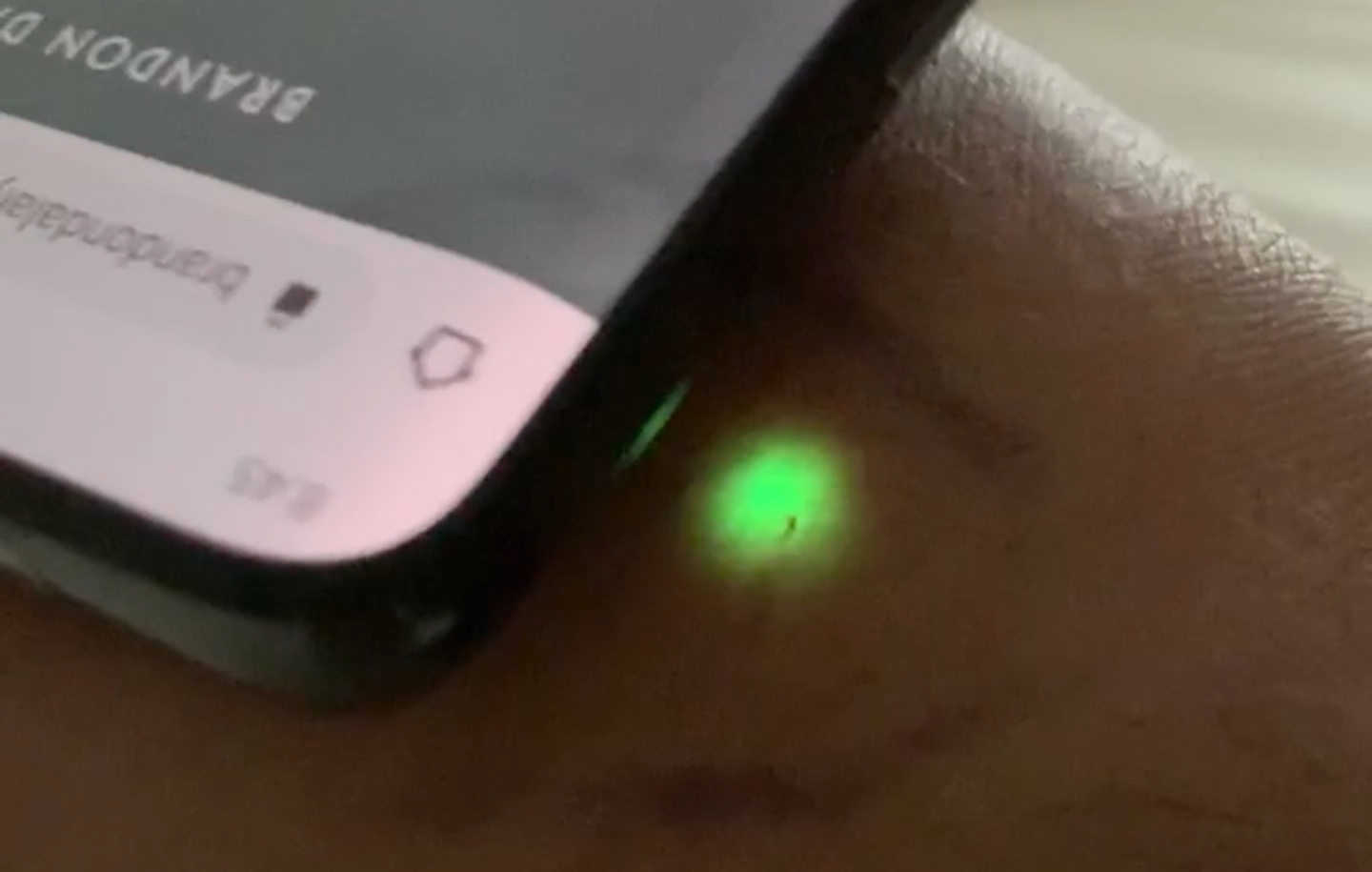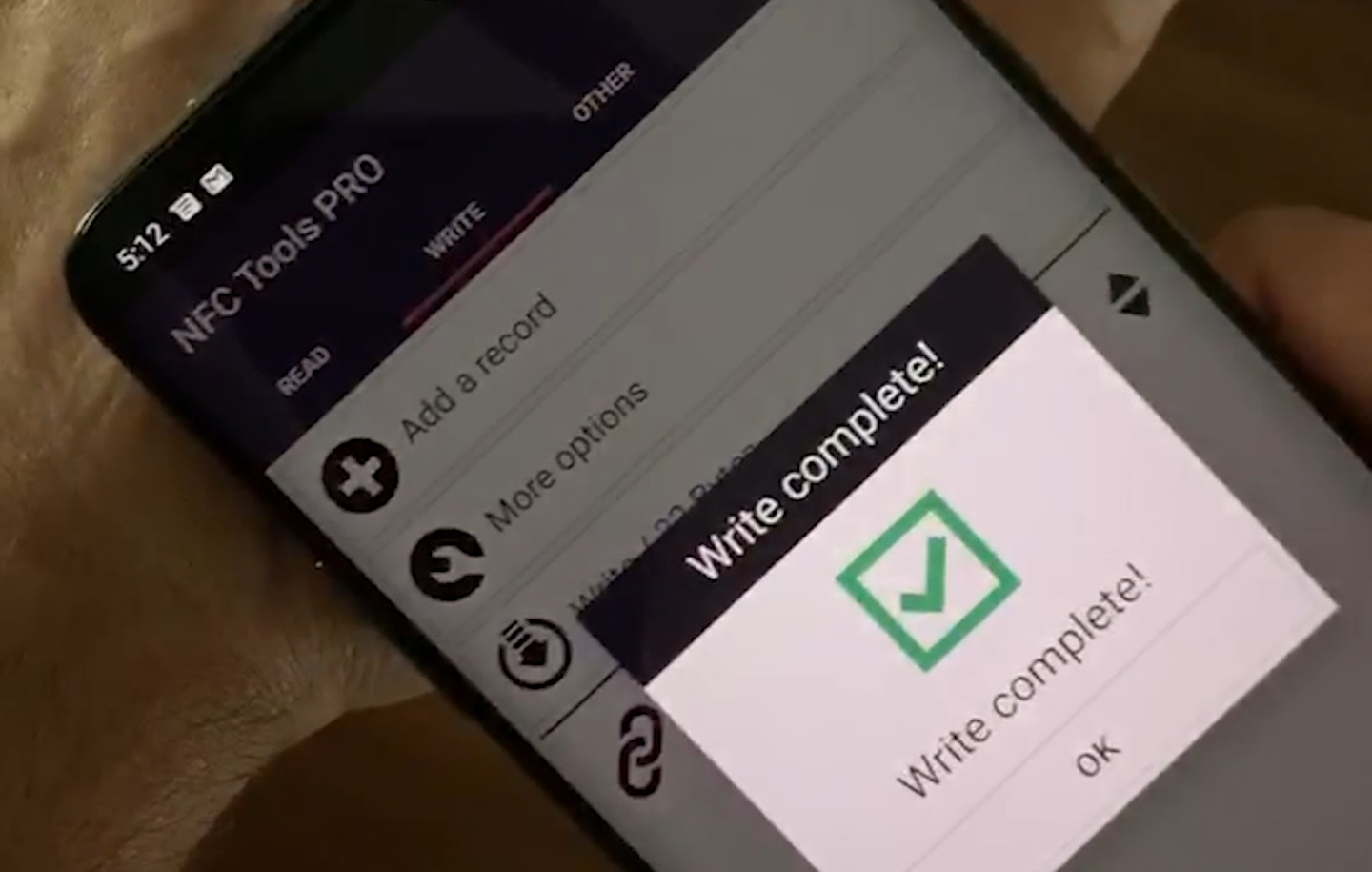Brandon Dalaly, a Tesla owner, has a unique way of unlocking his car: with his hand. Or rather, with the specially made chip that was implanted in his hand eleven days ago. I spoke with him about his new implant and he told me that this was actually his second one.
The first thing I wanted to know was how bad it hurt. If you watch this video, you’ll probably wince in imaginary pain as I did. Brandon explained that this was his second chip. When he received his first one, he did not use any anesthesia or anything to numb it.

“The first one was a little bit smaller so it wasn’t as intense as shoving that giant rod into my hand. The first one came preloaded into a larger syringe. They pushed the syringe in and they popped in the chip similar to how they would microchip a dog.”
The first chip implant burned and was sore for about a month. However, for the second one which is what is used to unlock his Tesla, his hand was anesthetized with lidocaine. Brandon said a four-gauge needle was used.
The chips, he explained, are coated in biocompatible substances such as biopolymer. His other one is a bioglass. Once implanted, the body encapsulates the chip with its own tissue.
Why Two Chips?
I was curious as to why Brandon had two chip implants. He explained that they do completely different things. The chips are used for a variety of purposes such as access control, storing data, lighting up under your skin, or storing cryptocurrencies. Brandon is actually beta testing the chip he uses to unlock his Tesla.

The chip that Brandon uses to unlock his Tesla is the VivoKey Apex which is a contactless NFC secure element chip.
“I’m in a beta group of around 100 people and this one can do secure transactions and java card applets. The company that put this together literally has its own app store where you can wirelessly install apps into your body with these chips. And one of the apps just happened to be a Tesla key card. So that was the first app I installed on it because I have a Tesla and now I use that as my key when my Bluetooth key fails or I don’t have my key card. You just use your hand.”
The first chip, Brandon explained, is the key to his home and stores his portfolio, his contact card, medical information, Covid vaccination card, and similar items. The chip can be scanned with any cell phone which then opens a portal you can access the information.
“The whole idea was that I would have my house key in my left hand and my car key in my right hand. And then what’s really cool is when it’s approved, they can wirelessly activate the new chip I just got to do credit card transactions. I can link a credit card to it and I can use it anywhere where there are tap-to-pay terminals.”
The Obvious Concern: accidently being close to something that would scan the chip and use it.

One concern I had was what if the chip was accidently used or accessed. Or, worst case scenario, hacked? For example, would a nearby credit card machine accidently scan your chip and access your money? Brandon explained that the chip had to be very close for the machine to read it.
“You have to be within a few millimeters of the thing and realistically, hopefully, you’re not just walking through credit card terminals and brushing your hands against them during mid transactions.”
“It’s a very short read range. It’s no different from your phone if you use Apple Pay. It’s like that but it’s built in your hand.”
Will Brandon get more chips?
Could this be the tech version of tattoo addictions? I asked Brandon if he had plans for getting any more chips in the future. Brandon works in tech and `is always trying to be on the cutting edge of everything.
“For me, it’s something that made sense at the time. It’s kind of like a fun party trick. When you can one of my chips with your phone, it glows green underneath your skin.”
There is another chip but it’s not yet available in the U.S. just yet. This one measures your body temperature. The capsule is installed in your chest and you can scan it with your phone and take your temperature.
“We’re at the dawn of this technology and it’s a very niche product. And there’s been a lot of pushback. People thought that Bill Gates was putting tracking chips in the Covid vaccine. It fuels a lot of conspiracy theories.”
“It’s funny because these chips can’t track anything. You would need an external power supply to be tracked anywhere. And their phones are tracking them everywhere they go anyway. If you go to your Google location history, it shows you step-by-step where you’ve been.”
“And there’s the religious people who have sent me a bunch of weird comments on Facebook about the mark of the beast on the video of my first chip installation. There’s something in the Book of Revelation that talks about this mark in your hand or forehead that shows your allegiance to Satan or something like that. I just don’t want to have to worry about forgetting my car keys. I’m not over here worshiping Satan.”
Cost of getting the Tesla key card chip implanted.

Credit: Brandon Dalaly
If you were to guess how much this would cost, you might be shocked at how wrong you may be. Unless you guessed $400.
“It’s not as bad as people think. Since I was a beta tester, I got the chip for $300 and then my installer charged me just $100 to put it in. To him, it was the same as a subdermal piercing. It’s the same method but he was sticking in something different.”
Brandon’s installer has been a professional piercer for over 15 years. What do you think? Would you consider having a chip installed in your hand to unlock your Tesla or smart car?
Disclaimer: Johnna is long Tesla.
Your feedback is important. If you have any comments, concerns, or see a typo, you can email me at johnna@teslarati.com. You can also reach me on Twitter @JohnnaCrider1

News
Tesla FSD fleet is nearing 7 billion total miles, including 2.5 billion city miles
As can be seen on Tesla’s official FSD webpage, vehicles equipped with the system have now navigated over 6.99 billion miles.

Tesla’s Full Self-Driving (Supervised) fleet is closing in on almost 7 billion total miles driven, as per data posted by the company on its official FSD webpage.
These figures hint at the massive scale of data fueling Tesla’s rapid FSD improvements, which have been quite notable as of late.
FSD mileage milestones
As can be seen on Tesla’s official FSD webpage, vehicles equipped with the system have now navigated over 6.99 billion miles. Tesla owner and avid FSD tester Whole Mars Catalog also shared a screenshot indicating that from the nearly 7 billion miles traveled by the FSD fleet, more than 2.5 billion miles were driven inside cities.
City miles are particularly valuable for complex urban scenarios like unprotected turns, pedestrian interactions, and traffic lights. This is also the difference-maker for FSD, as only complex solutions, such as Waymo’s self-driving taxis, operate similarly on inner-city streets. And even then, incidents such as the San Francisco blackouts have proven challenging for sensor-rich vehicles like Waymos.
Tesla’s data edge
Tesla has a number of advantages in the autonomous vehicle sector, one of which is the size of its fleet and the number of vehicles training FSD on real-world roads. Tesla’s nearly 7 billion FSD miles then allow the company to roll out updates that make its vehicles behave like they are being driven by experienced drivers, even if they are operating on their own.
So notable are Tesla’s improvements to FSD that NVIDIA Director of Robotics Jim Fan, after experiencing FSD v14, noted that the system is the first AI that passes what he described as a “Physical Turing Test.”
“Despite knowing exactly how robot learning works, I still find it magical watching the steering wheel turn by itself. First it feels surreal, next it becomes routine. Then, like the smartphone, taking it away actively hurts. This is how humanity gets rewired and glued to god-like technologies,” Fan wrote in a post on X.
News
Tesla starts showing how FSD will change lives in Europe
Local officials tested the system on narrow country roads and were impressed by FSD’s smooth, human-like driving, with some calling the service a game-changer for everyday life in areas that are far from urban centers.

Tesla has launched Europe’s first public shuttle service using Full Self-Driving (Supervised) in the rural Eifelkreis Bitburg-Prüm region of Germany, demonstrating how the technology can restore independence and mobility for people who struggle with limited transport options.
Local officials tested the system on narrow country roads and were impressed by FSD’s smooth, human-like driving, with some calling the service a game-changer for everyday life in areas that are far from urban centers.
Officials see real impact on rural residents
Arzfeld Mayor Johannes Kuhl and District Administrator Andreas Kruppert personally tested the Tesla shuttle service. This allowed them to see just how well FSD navigated winding lanes and rural roads confidently. Kruppert said, “Autonomous driving sounds like science fiction to many, but we simply see here that it works totally well in rural regions too.” Kuhl, for his part, also noted that FSD “feels like a very experienced driver.”
The pilot complements the area’s “Citizen Bus” program, which provides on-demand rides for elderly residents who can no longer drive themselves. Tesla Europe shared a video of a demonstration of the service, highlighting how FSD gives people their freedom back, even in places where public transport is not as prevalent.
What the Ministry for Economic Affairs and Transport says
Rhineland-Palatinate’s Minister Daniela Schmitt supported the project, praising the collaboration that made this “first of its kind in Europe” possible. As per the ministry, the rural rollout for the service shows FSD’s potential beyond major cities, and it delivers tangible benefits like grocery runs, doctor visits, and social connections for isolated residents.
“Reliable and flexible mobility is especially vital in rural areas. With the launch of a shuttle service using self-driving vehicles (FSD supervised) by Tesla in the Eifelkreis Bitburg-Prüm, an innovative pilot project is now getting underway that complements local community bus services. It is the first project of its kind in Europe.
“The result is a real gain for rural mobility: greater accessibility, more flexibility and tangible benefits for everyday life. A strong signal for innovation, cooperation and future-oriented mobility beyond urban centers,” the ministry wrote in a LinkedIn post.
News
Tesla China quietly posts Robotaxi-related job listing
Tesla China is currently seeking a Low Voltage Electrical Engineer to work on circuit board design for the company’s autonomous vehicles.

Tesla has posted a new job listing in Shanghai explicitly tied to its Robotaxi program, fueling speculation that the company is preparing to launch its dedicated autonomous ride-hailing service in China.
As noted in the listing, Tesla China is currently seeking a Low Voltage Electrical Engineer to work on circuit board design for the company’s autonomous vehicles.
Robotaxi-specific role
The listing, which was shared on social media platform X by industry watcher @tslaming, suggested that Tesla China is looking to fill the role urgently. The job listing itself specifically mentions that the person hired for the role will be working on the Low Voltage Hardware team, which would design the circuit boards that would serve as the nervous system of the Robotaxi.
Key tasks for the role, as indicated in the job listing, include collaboration with PCB layout, firmware, mechanical, program management, and validation teams, among other responsibilities. The role is based in Shanghai.
China Robotaxi launch
China represents a massive potential market for robotaxis, with its dense urban centers and supportive policies in select cities. Tesla has limited permission to roll out FSD in the country, though despite this, its vehicles have been hailed as among the best in the market when it comes to autonomous features. So far, at least, it appears that China supports Tesla’s FSD and Robotaxi rollout.
This was hinted at in November, when Tesla brought the Cybercab to the 8th China International Import Expo (CIIE) in Shanghai, marking the first time that the autonomous two-seater was brought to the Asia-Pacific region. The vehicle, despite not having a release date in China, received a significant amount of interest among the event’s attendees.










